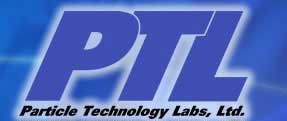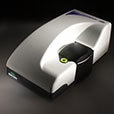
Topics Covered
Background
Dispersion Characterization
Dispersion Characterization Instrumentation Available
Malvern Zetasizer Nano
Nicomp 380/ZLS
Background
Particle Technology Labs is a premier service laboratory, dedicated to quality particle size and characterization. Our services include but are not limited to:
Dispersion Characterization
Zeta Potential determination helps to characterize the stability of a sample suspension
Dispersion Characterization Instrumentation Available
PTL has the following dispersion characterisation equipment available:
- Malvern Zetasizer Nano
- Nicomp 380/ZLS
Malvern Zetasizer Nano
Features of Malvern Zetasizer Nano
- Malvern patented NIBS optics allows measurements of samples with little or no dilution
- Uses a unique disposable zeta potential cell to ensure no cross contamination of samples
- Can analyze liquid
- Particle size reported on intensity and volume basis
- Zeta Potential in aqueous and non-aqueous fluids

Figure 1. Malvern Zetasizer Nano
Malvern Zetasizer Nano is ideal for the following applications
- Particle Size - measurements of particle size from 0.6nm - 6µm
- Zeta Potential - measurements
Recommendations for Optimal Output
- Viscosity of carrier fluid at desired analytical temperature (If not known default values will be used.)
- Dielectric constant of carrier fluid (applicable for Zeta Potential)
- Refractive Index and imaginary number (can analyze without)
- Recommended amount of sample needed: 3-20 mL
Nicomp 380/ZLS
Features of Nicomp 380/ZLS
- Analytical range: approx 0.010µm - 15µm
- Can only analyze aqueous suspensions

Figure 2. Nicomp 380/ZLS
Nicomp 380/ZLS is ideal for the following applications
- Zeta potential (colloidal stability) measurement
- Quality control
Recommendations for Optimal Output
- Recommended amount of sample needed: 3mL to 20mL
Source: Particle Technology Labs
For more information on this source please visit Particle Technology Labs